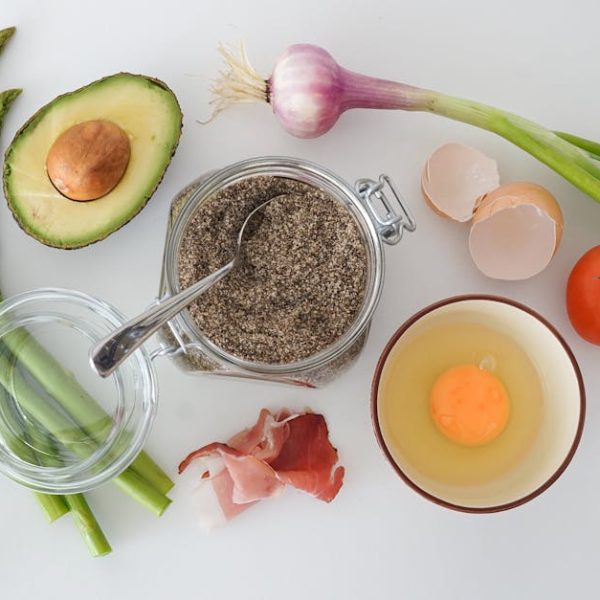Spinach, a leafy wonder-native to Iran, boasts a long history of benefits dating back to Persian culture. Today, it’s grown and consumed worldwide, featuring heavily in European, Asian, and African cuisines. This versatile veggie, with its soft tender leaves and neutral flavor, easily fits into a wide gamut of dishes, offering impressive nutritional benefits.
Coming from a cruciferous vegetable family, kale is a newer hit on the global food scene. Dominating the landscape of health fads, it stands apart with its thick, hardy leaves and pronounced bitter flavor. Once a staple only in parts of Europe, kale’s popularity exploded worldwide due to its nutrient-dense profile.
Distinguishing Features: Spinach vs Kale
Observing spinach and kale, their differences are stark. Spinach, with its smooth, deep-green leaves, is smaller and more delicate. Conversely, kale, available in green or purple, features larger, dense, curly leaves with tough stalks.
When it comes to taste, spinach is mild and versatile while kale takes on a robust, peppery flavor with a bitter edge. Texture-wise, cooked spinach wilts to a soft consistency whereas kale maintains its hearty texture even after cooking. These contrasting elements influence their usage in different culinary scenarios.
The Nutritional Face-Off: Spinach vs Kale
When it comes to nutrient composition, both leafy greens pack a punch. Spinach ranks high in iron, magnesium, and vitamins A, C, and K. It is also one of the best sources of plant-based lutein, a potent antioxidant that is great for eye health.
Kale, on the other hand, stands tall with an abundance of vitamin C – higher than most fruits and vegetables! It’s a powerhouse of vitamin K and a great source of calcium, making it beneficial for bone health. Plus, its fiber content exceeds that of spinach, supporting effective digestion.
| Nutrient | Spinach | Kale |
|---|---|---|
| Vitamin A | ✔ | ✔ |
| Vitamin C | ✔ | ✔ |
| Vitamin K | ✔ | ✔ |
| Iron | ✔ | ✘ |
| Calcium | ✔ | ✔ |
Health Impact: Spinach and Kale in Your Diet
The bounty of nutrients in spinach and kale offers several health advantages. Regular intake of these leafy greens can combat chronic diseases like heart disease and diabetes. Their high fiber and water content support gut health, aiding digestion.
Spinach with its beta carotene improves eye health, while kale, a rich source of vitamin C, promotes healthy skin. Both these greens also function as an all-round nutrient supplement, contributing to improved bodily functions.
Pro Tip: To get the most out of these greens, vary their usage in your meals. Spinach’s mild flavor blends well in salads, smoothies, or eggs. For kale, to counter its slight bitterness, consider massaging the leaves with olive oil for a salad or roasting them for a crunchy snack.
Choosing Between Spinach and Kale: What to consider
The choice between spinach and kale boils down to individual preference and specific dietary needs. Factors like allergies, desired texture, taste preference, and cooking methods can guide your selection.
✔️ Checklist:
- Nutritional needs (Iron, fiber, vitamins, etc)
- Flavor preference
- Intended dish preparation
- Allergies or intolerances
Best practices:
- Look for vibrant, undamaged leaves when purchasing.
- Store in a cool, dry place.
- Wash thoroughly before cooking or eating raw.
- Experiment with both in different dishes to understand your preference!
Key Takeaway:
- Spinach and Kale, while both being superfoods, are not the same. They have unique physical characteristics, flavors, textures, and nutrient profiles.
- Spinach is soft and has a milder taste, while Kale has a tougher texture and a slightly bitter taste.
- Both are high in vitamins A, C, and K, but Spinach offers more iron while Kale is richer in Vitamin K.
- They are both beneficial for health, reducing risk of chronic disease, aiding digestion and maintaining gut health.
It’s wonderful that we have such a variety of nutritious leafy greens available to us. By understanding the unique characteristics of each, you can make informed choices about what to include in your meals based on your preference and nutritional needs. Experiment with these greens and find your perfect balance to maximally enjoy and benefit from their superfood status.
FAQs
Q: Is raw Kale harder to digest than Spinach?
A: Yes, due to its firm texture, raw kale can be harder to digest than spinach. Preparing it by massaging with a little oil can help soften the leaves and make it easier to digest.
Q: Can I substitute Spinach for Kale in recipes and vice versa?
A: Yes, you can substitute spinach for kale and vice versa, but note that this might alter the taste and texture of your dish due to their unique characteristics.
Q: Is it good to have Spinach and Kale in the same meal?
A: Absolutely, having spinach and kale in the same meal will give you a varied nutrient profile. Just ensure to balance the flavors well.
Q: Which is healthier, Spinach or Kale?
A: Both spinach and kale are packed with nutrients and their own unique health benefits. It’s not about which is healthier, but which nutrients you prefer more in your diet.
Q: Should I avoid Spinach or Kale if I am on a low-carb diet?
A: Not at all. Both spinach and kale are low in carbs and high in fiber, making them a good fit for a low-carb diet. Always remember, a well-balanced diet is key to healthy living.
Remember to share this informative piece and explore more enlightening posts about nutrition on our website!






